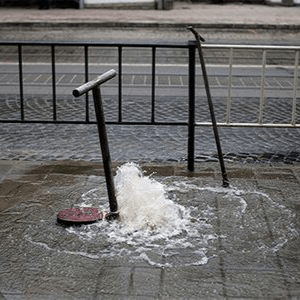Not all the waterfalls as the need might arise to be taken out by the waste framework. Some of it will invade into the ground, while some might remain in puddles and different dejections and the long run vanish. Click Here https://www.conserve-energy-future.com/effects-solutions-open-drains.php to see more about blocked drainage. The extent that takes off over the ground surface and must be conveyed in the seepage framework is known as the spillover coefficient. Practically speaking, there is minimal opportunity for vanishing during a rainstorm, so the spillover coefficient to utilize while working out the size of the channels required depends on the penetration limit of the ground. This relies primarily upon soil conditions, the incline of the landscape, and ashore use:
Soil condition

Water leaks more promptly into sandy soil than into mud or rough ground. Territory. Water streams all the more quickly down a lofty slant, leaving it less chance to penetrate than when it stands or moves gradually in a level region. Land use. Vegetation traps a large part of the water and releases the dirt, accordingly making penetration more straightforward. Rooftops and cleared surfaces, then again, forestall an invasion. Overflow coefficients are in this manner higher in areas of earth soil or rock, on steep inclines, and in thickly developed regions with little vegetation. To act as an illustration of this, the amount of water to be depleted from a high-thickness lodging region might be 5-6 times more noteworthy than it was at the point at which the region was lacking and covered with vegetation. The rate at which water enters the seepage framework relies upon the spillover coefficient, yet in addition on the pace of precipitation. This can differ, from a weighty storm to a light shower, and it is difficult to assess the most extreme power of precipitation that will happen in a given year, as a result of the unusualness of the climate. Nonetheless, by breaking down past precipitation records, it is feasible to make a gauge of the likelihood of a specific rate happening. The more serious the rainstorm (i.e., the higher the pace of precipitation), the lower the likelihood of its happening. This likelihood is generally communicated as a “bring period back”. A rainstorm with a likelihood of 1 out of 20 occurring in a specific year is said to have a return time of 20 years and is known as a 20-year storm.
Expenditure on framework
The cash spent in developing a framework with such a huge limit could have been exceptionally spent on building more modest channels in regions that have none. Picking the ideal return time frame for the plan of a metropolitan waste framework is a troublesome judgment in light of gauging the gamble of the channels spilling over, and the harm this could cause, against the expense of building bigger channels to forestall it. A return time of five years is broadly used to plan essential waste frameworks in tropical urban communities, however, more limited periods (three years or less) are more reasonable for micro drainage inside neighbourhoods, where an infrequent flood is less inclined to cause genuine harm. In a low-pay region, where the worth of property at risk of harm is moderately little, and just restricted reserves are accessible for waste, the suitable return period might be more limited still. In Mombasa, for instance, a one-year return period has been taken on for everything except the biggest channels.
